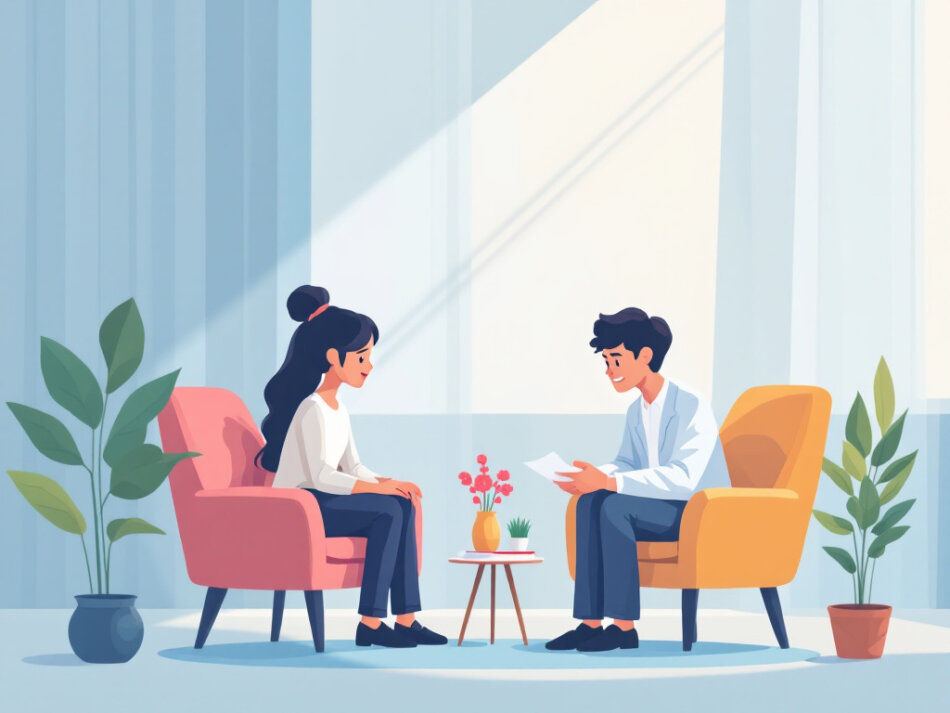Understanding art and music therapy
When you explore art and music therapy for adults, you tap into holistic and experiential therapies that support emotional recovery, stress relief, and mind-body healing. These creative approaches often complement traditional mental health treatments within programs that accept insurance, so you can pursue deeper healing without financial strain. Whether you’re drawn to making visual art or engaging with music, these evidence-based modalities can enrich your journey toward wellness.
Exploring art therapy
Art therapy is a mental health profession that uses active art-making, creative processes, and applied psychological theory within a therapeutic relationship to foster emotional resilience and self-awareness [1]. A credentialed art therapist holds a graduate degree and specialized training to address cognitive functions, emotional well-being, and social skills in medical, clinical, or community settings.
Key techniques
- Mandala drawing, which reduces negative emotions by focusing attention on repeating patterns [2]
- Painting to music, an expressive method where you translate rhythms and melodies into visual forms [2]
- Visual journaling, combining art and writing to explore emotions in a safe, personal format [2]
- Vision boards, creating a visual map of goals and aspirations to motivate daily progress [2]
Core benefits
Emotional resilience
Art therapy gives you a nonverbal outlet for difficult feelings, promoting insight, reducing anxiety, and boosting mood. Studies show art therapy combined with counseling or medication effectively reduces symptoms of anxiety and depression in adults [3].
Stress reduction
Engaging in art for at least 45 minutes daily can lower cortisol levels, the body’s primary stress hormone, helping you feel calmer and more centered [3].
Improved self-esteem
Creating art helps you overcome challenges, gain pride in your work, and enhance self-confidence, laying a foundation for long-term coping strategies [3].
Cognitive support
Through kinesthetic, sensory, perceptual, and symbolic approaches, art therapy engages multiple brain networks, which can help maintain or improve cognitive functioning, especially in adults with dementia or cognitive impairment [4].
Exploring music therapy
Music therapy is a clinical treatment that uses sound, rhythm, melody, and harmony within a therapeutic relationship led by a qualified music therapist to manage conditions and improve quality of life for adults of all ages [5]. You don’t need musical experience to benefit—therapists tailor sessions to your goals, whether you sing, play an instrument, listen to music, or discuss lyrics.
Session formats
Individual sessions
One-on-one work allows the therapist to adapt activities precisely to your emotional or physical needs.
Group sessions
Shared musical experiences foster social connection, peer support, and mutual encouragement.
Core benefits
Anxiety and stress relief
Music-based interventions have been shown to reduce anxiety in various health care settings and improve markers of stress [4].
Mood regulation
Adding music therapy to usual treatments enhances mood and lowers depressive symptoms in adults with depression [4].
Neurological support
In neurological disorders such as Parkinson’s disease and stroke, music therapy stimulates neuroplasticity, improving motor function, coordination, and mobility [6].
Trauma recovery
Trauma-focused music therapy can reduce post-traumatic stress symptoms and support emotional processing for adults who haven’t responded fully to conventional treatments [6].
Supporting older adults
Group singing, movement to rhythm, and improvisation help older adults express deep emotions, strengthen emotional regulation, and enhance overall quality of life [6].
Comparing art and music therapy
| Feature | Art therapy | Music therapy |
|---|---|---|
| Primary focus | Visual expression, symbolic meaning | Auditory and rhythmic engagement |
| Typical activities | Drawing, painting, sculpting, collage | Singing, instrument playing, songwriting, listening |
| Common benefits | Emotional resilience, stress reduction, self-esteem, cognitive support [3] | Anxiety relief, mood regulation, motor rehabilitation, trauma processing [4] |
How therapies work
Art therapy process
- Assessment, where you discuss goals, history, and preferences with a credentialed art therapist.
- Creation phase, selecting materials and approaches that suit your needs—watercolor, clay, collage, or mixed media.
- Reflection, using the artwork as a springboard for verbal exploration and insight.
- Integration, developing strategies to apply creative insights to daily life.
Music therapy process
- Goal setting, clarifying your emotional or physical objectives.
- Selection of musical interventions—active (playing, singing) or receptive (listening).
- Music-based activities, such as improvisation, songwriting, or lyric analysis.
- Review and adjustment, where the therapist evaluates progress and adapts future sessions.
Choosing the right program
Insurance and coverage
Many integrative mental health programs accept insurance for art and music therapy. Look for an integrative therapy program that accepts insurance or holistic mental health treatment that accepts insurance to ensure your sessions are covered.
Credentials and accreditation
Verify that art therapists hold credentials from the American Art Therapy Association and that music therapists are board-certified through the Certification Board for Music Therapists.
Program focus
Decide whether you prefer individual or group settings, and whether you need specialization in trauma, cognitive impairment, or mood disorders. You might also explore creative arts therapy for emotional expression or experiential therapy for mental health recovery for a broader approach.
Integrating therapies together
Expressive arts therapy
This multimodal approach combines art, music, dance, drama, poetry, and movement to support those who struggle to express themselves verbally [7]. Techniques include:
- Intuitive drawing and painting
- Clay sculpting to externalize inner states
- Mask making to explore social roles
- Movement exercises for self-regulation
- Guided imagery with music for relaxation
Combined modalities
You can pair art and music therapy with other holistic methods such as yoga therapy for emotional healing, equine-assisted therapy for adults, or stress reduction therapy for adults to create a customized healing journey.
What to expect
Session details
Your first session typically lasts 45–60 minutes. You’ll review your history, set goals, and sample a creative activity or musical exercise. As you continue, sessions will evolve to match your progress and changing needs.
Setting goals
Work with your therapist to establish short-term targets—like reducing anxiety during group art projects—and long-term objectives, such as improved emotional regulation or enhanced social connection.
Next steps for you
Finding a program
Start by researching accredited providers in your area that offer holistic therapy for adults or an integrative therapy program that accepts insurance. Ask about therapist credentials, session formats, and insurance coverage.
Preparing for therapy
Gather any past treatment records and think about your creative interests or musical preferences. Clear a dedicated space for sessions—an art corner with basic supplies or a quiet spot for listening and playing music.
By integrating art and music therapy into your holistic mental health plan, you embrace evidence-based, experiential therapies that can deepen emotional healing and strengthen your mind-body connection. Whether you work one-on-one with a therapist or join a group, these creative approaches offer you new ways to explore, express, and transform your emotional landscape.











